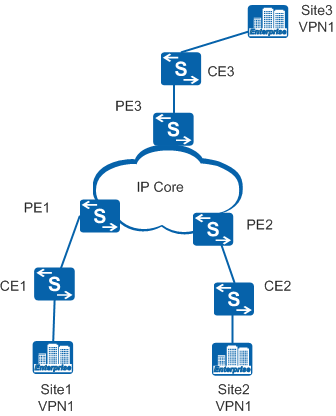VPLS Application in Enterprise Services
Service Overview
As enterprises become more widely dispersed and employees become more mobile, applications such as instant messaging and teleconferencing become increasingly important. This imposes high requirements for E2E data communication technologies. P2MP services are vital for data communications. To ensure enterprise data remains secure, reliable, and transparent, data channels must be provided for multipoint transmission.
Networking Description
In Figure 1, Site1, Site2, and Site3 are R&D departments of an enterprise. The three sites are connected across a metropolitan area network (MAN). The enterprise needs to transmit Layer 2 service packets between branches using VPLS technology to allow branches in different locations to communicate with each other.
Feature Deployment
VPLS is configured on PEs to transparently transmit traffic between them. From an enterprise user perspective, the public network is similar to a single Layer 2 switch. Figure 1 uses LDP VPLS as an example to show VPLS configuration:
Access-layer devices
VLANs are configured to differentiate different types of enterprise users.
Convergence-layer devices
An IGP is configured on PEs so that they can communicate with each other.
Basic MPLS functions are configured on PEs so that they can establish remote LDP sessions.
MPLS L2VPN and VSIs are configured on PEs. Dual-homing is used on the VPLS network to protect traffic.
Limit on the number of learned MAC addresses and traffic suppression are configured on PEs to protect data.
